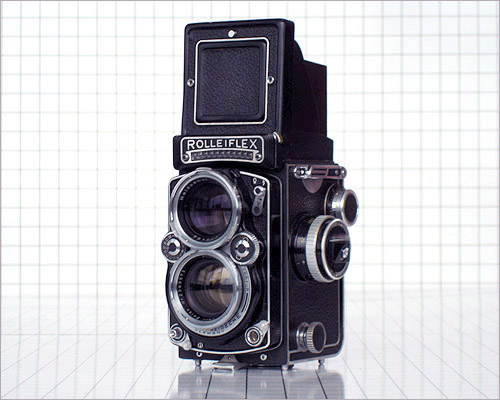
| |
Franke & Heidecke Rolleiflex 2.8E
1956
120 roll film
6cm x 6cm image size
12 exposures per roll
80mm f/2.8 Zeiss Planar (coated)
Synchro-Compur (B - 1/500th, MXV sync)
twin lens reflex
waist level finder
built-in light meter
|
|
|
|
The Franke & Heidecke Rolleiflex 2.8E is one of my favorite cameras. It has two lenses - one for the waist-level viewfinder (which is viewed from above) and one for the film. The two lenses are built into the same lensboard, so focussing one focuses the other. As a result this wonderful TLR (twin lens reflex) is very quick and easy to focus.
Waist-level viewfinders are great because you see a real image of the subject rather than a virtual image (as with a normal viewfinder).
The Rolleiflex 2.8E has a built-in light meter and is designed so that you can change all of the settings while looking down into the waist-level finder from above. Aperture, shutter speed, light meter, focus, and depth-of-field indicators can all be read while simultaneously looking at the subject in the viewfinder.
The meter normally measures reflected light (light reflecting from the subject) rather than incident light (light falling on the subject). But the camera comes with a diffusor which allows the meter to work as an incident light meter as well. This is very handy for shooting people as incident light readings are more accurate than reflected light readings - and with a close subject (like a person) it's easy to turn the camera so that it's catching the same light as the person to take a quick incident reading before shooting.
This camera uses an exposure system where the meter reads EV (exposure value). The aperture and shutter speed are then locked together at the metered EV and changing one automatically changes the other.
|
|
|